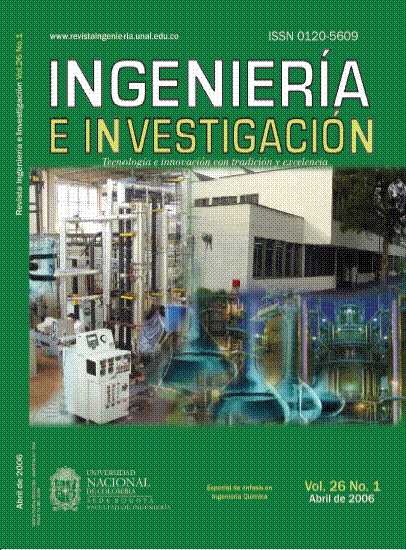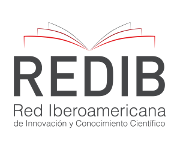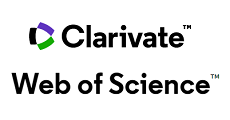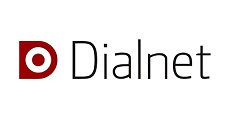Rapid casting and new technologies in investment casting
Rapid casting y nuevas tecnologías en el proceso de microfundición
DOI:
https://doi.org/10.15446/ing.investig.v26n1.14683Palabras clave:
rapid prototyping, lost wax process (investment casting), waxes, ABS (en)prototipado rápido, microfundición (fundición de precisión), ceras, ABS (es)
Descargas
Rapid prototyping is a manufacturing process which is different to traditional methods as material is not removed or formed but added to obtain the designed pieces. It is not just used for manufacturing finished products but in manufacturing tooling for speeding up other manufacturing processes. This paper introduces rapid prototyping as a support technique for the lost wax process (investment casting). It gives a brief description of the different techniques implemented to date and materials used for making articles as part of the lost wax process.
Siendo el prototipado rápido un método de fabricación diferente de los tradicionales en que no remueve o deforma material sino que lo agrega para obtener las piezas que se han diseñado, es utilizado no solamente en la fabricación de productos terminados sino también en la elaboración de herramientas para agilizar diferentes procesos de manufactura. Este artículo introduce el prototipado rápido como técnica de apoyo al proceso de microfundición. Se hace una descripción corta de las diferentes técnicas que se han implementado hasta el momento y los materiales que sirven para elaborar los artículos de las diversas etapas del proceso en las que prototipado rápido interviene.
Referencias
Ashley, S., Rapid Prototyping is Coming of Age, In: Mechanical Engineering, Vol. 117, No. 7, 1995.
Colton, J.S., Manufacturing Processes and Engineering, Georgia Institute of Technology.
Chen, Y., Computer-Aided Design for Rapid Tooling: Methods for Mold Design and Design-for-Manufacture, Georgia Institute of Technology, 2001.
Des Egan, Aug, Designers Guide to Rapid Prototyping in Product Design and Manufacture, 2000.
Ferreira, J.C. and Mateus, A., A numerical experimental study of fracture in RP Stereolitography patterns and ceramic shell for investment casting, Journal of Materials Processing Technology, 2003. DOI: https://doi.org/10.1016/S0924-0136(02)01034-8
Gebhardt, A., Materials in Rapid Prototyping: Today's Limits and Future Possibilities, CP-Centrum fur Prototypenbau, Erkelenz / Düsseldorf Trieste, Italy, 2002.
Hitchiner Manufacturing Co., Inc., An Introduction to the Investment Casting Process Technical Updated.
Jacobs, PF, Rapid Prototyping and Manufacturing, SME, Dearborn, Usa,1992.
Jones, S. and Yuan, C., Advances in shell molding for investment casting. In: Journal of Materials Processing Technology, 2003. DOI: https://doi.org/10.1016/S0924-0136(02)00907-X
Jolly, M., Cox, M., Gebelin, J., Jones, S. and Cendrowicz, A., Modelling the Investment Casting Process, Fundamentals of Investment Casting (FOCAST) IRC in Materials, University of Birmingham, UK American Foundry Society, 2001.
Klocke, F, and Freyer, C., Rapid Prototyping & tooling industrial applications Fraunhofer Institute of Production Technology IPT, Aachen, The Tooling Network Research Group European Community, No 2, 1999.
Liu, Q., Sui G., and Leu, M.C., Experimental study on the ice pattern fabrication for the investment casting by rapid freeze prototyping (RFP), In: Computers in Industry, 2002. DOI: https://doi.org/10.1016/S0166-3615(02)00042-8
Maffezzoli, A., Rapid Prototyping: An Overview, University of Lecce, Italy, 2000.
Mueller, B, and Kochan, D., Laminated object manufacturing for rapid tooling and patternmaking in foundry industry, In: Computers in Industry, 1999. DOI: https://doi.org/10.1016/S0166-3615(98)00127-4
Prasad, K.D.V, Yarlagadda, and Sianghock, T., Statistical Analysis on Accuracy of Wax Patterns Used in Investment Casting Process, In: Journal of Material Processing and Technology, 2003. DOI: https://doi.org/10.1016/S0924-0136(03)00052-9
Robinson, D. W., Integration of Rapid Prototyping and Reverse Engineering for Complex 3D Shape Design, Massachusetts Institute of Technology (MIT), 1996.
Rosochowski, A. and Matuszak, A., Rapid tooling: the state of the art, In: Journal of Materials Processing and Technology, 2000. DOI: https://doi.org/10.1016/S0924-0136(00)00613-0
Sánchez, C., Conceptos de Diseño para Manufactura DFM de piezas microfundidas para aplicación en Dispositivos Biomecánicos, Proyecto de grado presentado a la Universidad Nacional de Colombia, para optar por el título de Ingeniera Mecánica, 2003.
Shu-Hung, H., HD RP Handout, CHUNG, University of Hong Kong..
The Legacy of Investment Casting, Hitchiner Manufacturing Co., Inc., April-1998.
Tromans, G., State of The Art Report, Rapid Casting, 2002.
Tu, J. S., Foran, R. K., Hines, A. M., and AIMONE, PR., An Integrated Procedure for Modeling Investment Castings, In: JOM (Minerals Metals and Materials Society publication), http://www.tms.org/pubs/journals/JOM/jom.html [on line].
Wiedemann, B., and Jantzen, H. A., Strategies and applications for rapid product and process development in Daimler-Benz AG, In: Computers in Industry, 1999. DOI: https://doi.org/10.1016/S0166-3615(98)00126-2
Yaoa, W.L., Ming, U. and Leub, C., Analysis and design of internal web structure of laser stereolithography patterns for investment casting, In: Materials and Design, 2000. DOI: https://doi.org/10.1016/S0261-3069(99)00061-8
http://www.ame.arizona.edu/ame412a/slides/12.RapidProto.pdf Presented by Ranji Vaidyanathan Advanced Ceramics Research Tucson.
http://cdr.standford.edu/html/DD/PEARL/home.html
http://r-curtis.umds.ac.uk/cz0326/TIT.HTM
http://www.hitchiner.com/home.html
http://www.northernprecision.com/facts.htm
http://www.sfsa.org/sfsa/dsgmtlcr.html
http://www.efunda.com/processes/metal_processing/Investmet_Casting.cfm
http://www.kp.dlr.de/WB-RS/Erstarrung/web_eng/herstell_eng.html
http://www.ccbda.org/publications/pub13e/Investment_Casting.html
http://www.rugergolf.com/titanium.htm
http://www.tms.org/pubs/journals/JOM/jom.html
http://www.me.iastate.edu/me324_bahadur/Section%202.2/2_1.htm
http://www.ee.cityu.edu.hk/~shc/
http://www.me.psu.edu/lamancusa/RapidPro/primer/chapter2.htm
http://www.cs.hut.fi/~ado/rp/tableofcontents3_1.html
http://www.udri.udayton.edu/rpdl//papers.htm
Cómo citar
APA
ACM
ACS
ABNT
Chicago
Harvard
IEEE
MLA
Turabian
Vancouver
Descargar cita
CrossRef Cited-by
1. Diana Belén Peralta-Zurita, Diego Jimenez-Pereira, Jaime Vinicio Molina-Osejos, Gustavo Adolfo Moreno-Jiménez. (2021). Recent Advances in Electrical Engineering, Electronics and Energy. Lecture Notes in Electrical Engineering. 763, p.16. https://doi.org/10.1007/978-3-030-72212-8_2.
Dimensions
PlumX
Visitas a la página del resumen del artículo
Descargas
Licencia
Derechos de autor 2006 Claudia Marcela Sánchez R, Carlos Julio Cortés Rodríguez

Esta obra está bajo una licencia internacional Creative Commons Atribución 4.0.
Los autores o titulares del derecho de autor de cada artículo confieren a la revista Ingeniería e Investigación de la Universidad Nacional de Colombia una autorización no exclusiva, limitada y gratuita sobre el artículo que una vez evaluado y aprobado se envía para su posterior publicación ajustándose a las siguientes características:
1. Se remite la versión corregida de acuerdo con las sugerencias de los evaluadores y se aclara que el artículo mencionado se trata de un documento inédito sobre el que se tienen los derechos que se autorizan y se asume total responsabilidad por el contenido de su obra ante la revista Ingeniería e Investigación, la Universidad Nacional de Colombia y ante terceros.
2. La autorización conferida a la revista estará vigente a partir de la fecha en que se incluye en el volumen y número respectivo de la revista Ingeniería e Investigación en el Sistema Open Journal Systems y en la página principal de la revista (https://revistas.unal.edu.co/index.php/ingeinv), así como en las diferentes bases e índices de datos en que se encuentra indexada la publicación.
3. Los autores autorizan a la revista Ingeniería e Investigación de la Universidad Nacional de Colombia para publicar el documento en el formato en que sea requerido (impreso, digital, electrónico o cualquier otro conocido o por conocer) y autorizan a la revista Ingeniería e Investigación para incluir la obra en los índices y buscadores que estimen necesarios para promover su difusión.
4. Los autores aceptan que la autorización se hace a título gratuito, por lo tanto renuncian a recibir emolumento alguno por la publicación, distribución, comunicación pública y cualquier otro uso que se haga en los términos de la presente autorización.



























